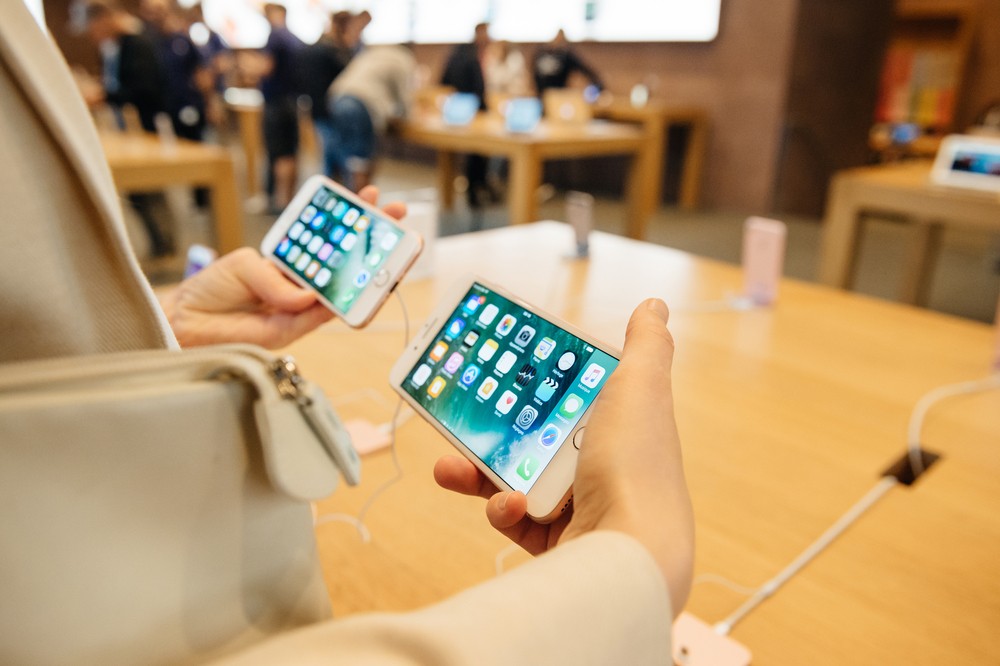Search
Cart
Your cart is empty


0
Your cart is empty
Search
mobiletrade 2020-04-28 09:49:05

To the normal, everyday consumer, having the newest and greatest smartphone to show off to people has always been high on the priority list, even if the device that they current have is more than able to help them with all of their needs and wants. This motivation is what makes people stand in line for hours in front of shop fronts. They spend their hard-earned money on something that’s just going to be replaced in the future for something that the previous models could do before.
The need to be apart of something that is bigger, apart of the zeitgeist, is something that’s slowly been integrated into everyday life. It could be getting a new phone, car, or even a new hobby. From the recent figures found in the latest reports from Apple and Samsung, it turns out that each model itself has not changed as much as people would have hoped. This makes one slightly new feature to a line of phones hardly worth throwing a few more digits on the heavy exuberant price tag.
With the aforementioned figures and the recent news of becoming the first trillion dollar company, Apple have made themselves into an everyday brand. People feel the need to upgrade their older models, just to be apart of the “In” crowd. This kind of social presence is one of Apple’s biggest driving factors by giving the consumer the feeling that they’re missing out on the bigger picture.
Since the time of the iPhone 4, Apple have only made small changes here and there with the release of a new model. The iPhone 5S added a home button that could read fingerprints, whereas the iPhone 5 just had a button. With the release of the iPhone 6 they redesigned the form-factor, giving it some curves and a larger screen. There were issues with this new large frame causing damage to the logic board, so with the 6S they reinforced the frame so that the nasty “Bendgate” fiasco does not reoccur. Next in line for Apple was the underwhelming iPhone 7.
With the iPhone SE 2020, Apple opted to replace the home button with a “fake” button that would vibrate when pressed. In Apple’s mind, this models new frame colors and sleek design would totally make up for the inevitable backlash from not having a physical home button anymore. But why would they stop there when they could take away even more features and still get paid for it? So, with smiles on their faces, they introduced the world to their new iPhone without a headphone jack (they shaved off .2 millimetres to the phones thickness, so it’s better!), and welcomed us to an overpriced set of Bluetooth earbuds they called AirPods.
It was a big gamble to take away something that has become a staple of the everyday consumer. It was their pathway to music and audio entertainment. Fast forward a couple of years and the newest member of the iPhone family comes out. It was dubbed the iPhone 8 instead of the 7S, juking the public’s expectation of Apples naming conventions. Apple understood if they named it the 7S people would assume it was only a slight upgrade (which is exactly what it was, only adding wireless charging), and naming it the iPhone 8 would mean larger sales. People would assume something even better had come along than they could have ever imagined. Apple’s plan worked flawlessly.
Apple made their crown achievement while unveiling the iPhone X (iPhone 10 now, even though when they first unveiled it they were pronouncing it X), making the iPhone 8 appear redundant in the same presentation it was announced in. Rather than adding features on a new line of devices, they took something away that made life and simple things on the iPhone easy, like the ability to return back to where they started: The home button. Since the release of the iPhone X scolding reviews have piled up for its outlandish new design being “ahead” of its time.
The consumers were unaware of how good they had it by having a home button and not an overstuffed power button with too many features. Sure it had new features like wireless charging, but when it comes to usability the home button functioned flawlessly. Due to these little designs changes over time, the functionality of the iPhone series all-together hasn’t really changed that much. Apple appears to make changes for the sake of making changes; they know they have to release new models every year and they can’t be exactly the same.
When it comes to the desire for consumers to upgrade their phones, they just need to look at Apple’s track record with new products. If Apple continues this pattern, they’re going to remove one thing and add another thing, masquerading these changes as improvements. This will allow them to continually jack up the prices each year, when in reality customers are paying for the exact same phone but with a newer paint job. When the newest iPhone comes out, Apple will have taken away something else and introduced something new, that you not only did not need, but would literally have zero use for unless they tell you it has a use. Bellow you can compare specs with the last 5 generations on iPhone.
[table id=1 /]From the table shown we can see that over the years there have not been a whole lot of changes happening with the iPhone. They take something away and then introduce something that you didn’t know you would need, until apple themselves make a stunning overpriced advertisement informing you that you need it.
Three models of the iPhone stick out for their lack of innovation more than the others: the iPhone 6, 7, and 8. They have the same frame, same specs with screen resolution, a processor that’s a little bit faster than the previous model, but essentially they could be passed off as the same phone due to the fact all that apple has produced it. Taking one new idea and then taking one of its existing features away then charging the consumer a fortune for it.
[table id=2 /]It’s a given that with every new model the processor speeds slightly increase and the cameras get a bit better. However, as you can see from this table, the progressive models’ largest, functional selling points have been literally next to nothing; yet the consumer will still pay to be apart of the “in crowd”. Apple itself has been the best at not only setting the trends, but manipulating them to work in their favor.
The iPhone is still a very good smartphone, no one is denying that; but it would probably be a better practice for consumers to hold onto their older devices for a lot longer before upgrading, maybe even until it completely breaks down. Upgrading every year like Apple wants not only increases their monopoly on the smartphone market, but gives them more leverage to make mediocre products and less innovation. If they’re getting the customers money, why make any changes at all?
Get the latest articles on all things data delivered straight to your inbox.
All blogs articles


Are you looking for budget-friendly but high-tech smartphone options in Australia? Are you striving to invest your hard-earned money against quality?...

As much as we love high-end smartphones, it's becoming impossible to afford them. Unless you earn a high salary and receive an annual promotion, it wo...

Whitestone Dome Glass Screen Protector is one of the best options to protect your phone from scratches, cracks, and other types of damage due to its s...